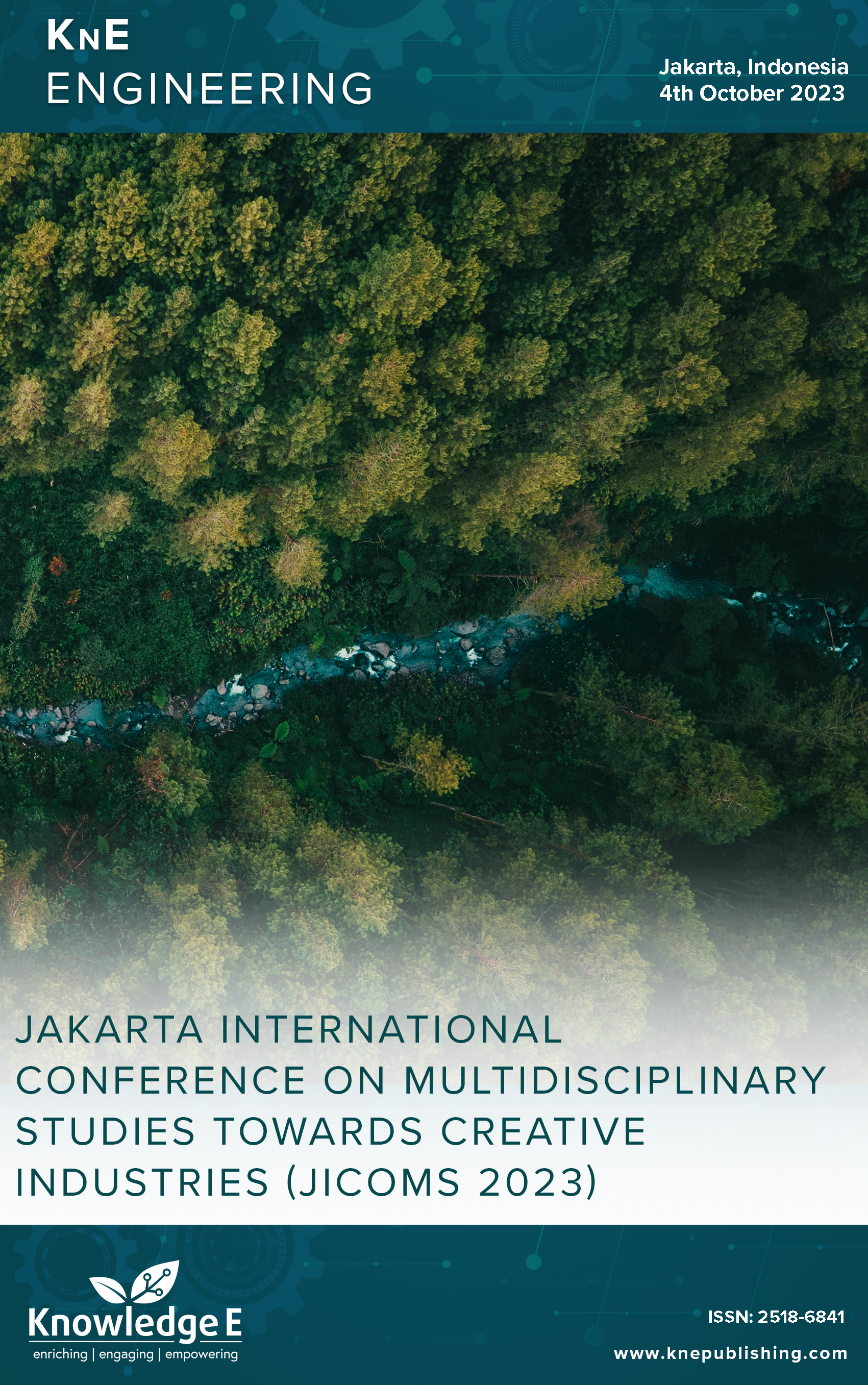New Design PdNi Heterogeneous Nanocatalysts for the Direct Synthesis of Hydrogen Peroxide
DOI:
https://doi.org/10.18502/keg.v6i1.15344Abstract
Hydrogen peroxide (H2O2) is a widely used chemical as an eco-friendly oxidizing agent, with water being the only byproduct of oxidation in applications like bleaching pulp and paper, making electronic semiconductors, chemical and detergent synthesis, and wastewater treatment. The direct synthesis approach is preferred to provide the environmentally friendly production of H2O2 for market requirements. Bimetallic PdNi nanocatalysts were chosen for this study because of their catalytic activity and the structural characteristics of the material system. First, for the development of order-structured bimetallic PdNi nanocatalysts based on mesoporous carbon template after hydrogen-assisted heat treatment at 750∘C. The transformation of the disordered structure into ordered intermetallically structured PdNi alloys with higher alloying extents was confirmed by X-ray absorption spectroscopy (XAS) and high-resolution transition electron microscopy (HR-TEM). Then, to improve the oxygen oxidation reaction, two-electron pathway selectivity was used by TiO2-C as a support-ordered structure material to facilitate strong metal-support interactions. XAS and X-ray photoelectron spectra (XPS) techniques show more clear evidence of metal-support interactions with electron transfer from defects in the TiO2-C support to the ordered alloyed PdNi nanocatalysts, resulting in record productivity and selectivity of H2O2 production at ambient conditions. The results demonstrated in this study will enlighten a reliable design of new heterogeneous nanocatalysts with ordered structure. Electron transfer between hybrid support and active sites can clarify the catalytic behavior and prompt further research during the direct synthesis of hydrogen peroxide.
Keywords: hydrogen peroxide, direct synthesis, heterogeneous nanocatalysts PdNi, TiO2-C
References
[2] Puértolas B, Hill AK, García T, Solsona B, Torrente-Murciano L. In-situ synthesis of hydrogen peroxide in tandem with selective oxidation reactions: A mini-review. Catal Today. 2015;248:115–27.
[3] Tian P, Xu X, Ao C, Ding D, Li W, Si R, et al. Direct and Selective Synthesis of Hydrogen Peroxide over Palladium-Tellurium Catalysts at Ambient Pressure. ChemSusChem.2017 Sep;10(17):3342–6.
[4] Seo Mg, Lee DW, Han SS, Lee KY. Direct Synthesis of Hydrogen Peroxide from Hydrogen and Oxygen over Mesoporous Silica-Shell-Coated, Palladium- Nanocrystal-Grafted SiO2 Nanobeads. ACS Catal. 2017;7:3039–48.
[5] Nugraha M, Tsai MC, Su WN, Chou HL, Hwang BJ. Descriptor study by density functional theory analysis for the direct synthesis of hydrogen peroxide using palladium–gold and palladium–mercury alloy catalysts. Mol Syst Des Eng. 2018;3:896–907.
[6] T.-T. Huynh, M.-C. Tsai, C.-J. Pan, W.-N. Su, T.-S. Chan, J.-F. Lee, B.-J.J.E.C. Hwang, Synergetic electrocatalytic activities towards hydrogen peroxide: Understanding the ordered structure of PdNi bimetallic nanocatalysts, 101 (2019) 93-98.
[7] Gu DE, Lu Y, Yang BC, Hu YD. Facile preparation of micro-mesoporous carbon-doped TiO2 photocatalysts with anatase crystalline walls under template-free condition. Chem Commun (Camb). 2008 Jun;(21):2453–5.
[8] Song Z, Hrbek J, Osgood R. Formation of TiO2 nanoparticles by reactive-layerassisted deposition and characterization by XPS and STM. Nano Lett. 2005 Jul;5(7):1327–32.
[9] Pan X, Yang MQ, Fu X, Zhang N, Xu YJ. Defective TiO2 with oxygen vacancies: synthesis, properties and photocatalytic applications. Nanoscale. 2013 May;5(9):3601–14.
[10] C.-J. Pan, M.-C. Tsai, W.-N. Su, J. Rick, N.G. Akalework, A.K. Agegnehu, S.- Y. Cheng, B.-J.J.J.o.t.T.I.o.C.E. Hwang, Tuning/exploiting strong metal-support interaction (SMSI) in heterogeneous catalysis, 74 (2017) 154-186.
[11] T. Hiratoko, A. Yoshiasa, T. Nakatani, M. Okube, A. Nakatsuka, K.J.J.o.s.r. Sugiyama, Temperature dependence of pre-edge features in Ti K-edge XANES spectra for ATiO3 (A= Ca and Sr), A2TiO4 (A= Mg and Fe), TiO2 rutile and TiO2 anatase, 20 (2013) 641-643.
[12] F. Leitzke, R. Fonseca, J. Göttlicher, R. Steininger, S. Jahn, C. Prescher, M.J.C.t.M. Lagos, Petrology, Ti K-edge XANES study on the coordination number and oxidation state of Titanium in pyroxene, olivine, armalcolite, ilmenite, and silicate glass during mare basalt petrogenesis, 173 (2018) 1-17.
[13] D. Carta, G. Mountjoy, A. Regoutz, A. Khiat, A. Serb, T.J.T.J.o.P.C.C. Prodromakis, X-ray absorption spectroscopy study of TiO2–x thin films for memory applications, 119 (2015) 4362-4370.
[14] B. Yang, J. Kirz, T.J.P.R.A. Sham, Oxygen K-edge extended x-ray-absorption finestructure studies of molecules containing oxygen and carbon atoms, 36 (1987) 4298.
[15] S. Tauster, S. Fung, R.L.J.J.o.t.A.C.S. Garten, Strong metal-support interactions. Group 8 noble metals supported on titanium dioxide, 100 (1978) 170-175.
[16] N.V. Krstajic, L.M. Vracar, V.R. Radmilovic, S.G. Neophytides, M. Labou, J.M. Jaksic, R. Tunold, P. Falaras, M.M.J.S.S. Jaksic, Advances in interactive supported electrocatalysts for hydrogen and oxygen electrode reactions, 601 (2007) 1949-1966.
[17] K.-i. Shimizu, Y. Kamiya, K. Osaki, H. Yoshida, A.J.C.S. Satsuma, Technology, The average Pd oxidation state in Pd/SiO 2 quantified by L 3-edge XANES analysis and its effects on catalytic activity for CO oxidation, 2 (2012) 767-772.
[18] D.-Y. Cho, S.J. Song, U.K. Kim, K.M. Kim, H.-K. Lee, C.S.J.J.o.M.C.C. Hwang, Spectroscopic investigation of the hole states in Ni-deficient NiO films, 1 (2013) 4334- 4338.
[19] Jung E, Shin H, Lee BH, Efremov V, Lee S, Lee HS, et al. Atomic-level tuning of Co-N-C catalyst for high-performance electrochemical H2O2production. Nat Mater. 2020 Apr;19(4):436–42.
[20] E.-K. Hlil, R. Baudoing-Savois, B. Moraweck, A.J.T.J.o.P.C. Renouprez, X-ray absorption edges in platinum-based alloys. 2. Influence of ordering and of the nature of the second metal, 100 (1996) 3102-3107.


